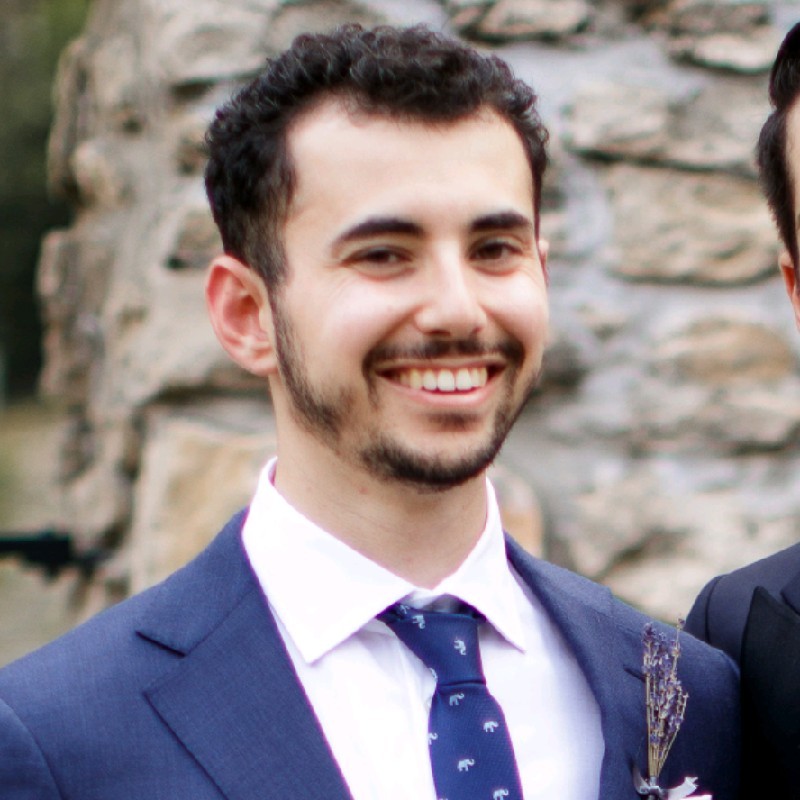Recalibrating your hiring strategy from start to finish
Can you see the holes in your hiring process? Let’s drill down on every step of the talent acquisition process from creating your job posting to making an offer.

Table of Contents
When was the last time you reevaluated your talent acquisition strategy? Sourcing, interviewing, and then securing the right fit for your company isn’t easy in today’s competitive labor market. Finding the skills organizations need is a must for building productive, innovative teams. But hiring isn’t easy in today’s competitive marketplace and it can be an expensive process. SHRM cites the estimated total cost to hire a new employee can be three to four times the position’s salary. This can be because talent acquisition teams are stuck with mountains of applications and inefficient manual processes, instead of doing the work you’re meant to do – focusing on hiring top talent.
With the right talent acquisition strategy, your organization can improve time to fill and make more efficient hiring decisions while improving the quality of your hires. At the same time, it can create a more personalized and responsive candidate experience right from the beginning, inspiring the best talent to choose you.
Each step in your hiring sequence influences the next, so looking at the entire end-to-end process is the key to getting it right. Let’s dive into the key milestones in the talent acquisition process to see where the biggest inefficiencies lie.
Creating your job posting
Writing an attractive job posting is no easy feat. It needs to be short enough to keep your applicant’s attention, yet long enough to include all the necessary information so they can quickly evaluate if they have the job requirements. Your posting also needs to capture the essence of your company culture, so your applicants can decide if they’d be a good fit for your workplace.
Finding the right people is challenging for many organizations: 73% of recruiters surveyed struggled to find candidates with the right skills, according to On Hires.
It can also be easy to get lost in the shuffle. So how do you make your job posting stand out?
Get detailed
Describe the day-to-day responsibilities on the job. This includes technical requirements, soft skills, and key tasks. For example, in 2025, analytical thinking remains the most sought- after core skill among employers, with Future of Jobs 2025 finding that seven out of 10 surveyed companies consider it as essential. This was followed by skills such as resilience, flexibility and agility, along with leadership and social influence.
Stay transparent
One of WTW’s 2025 Pay Trends is balancing cost management with a careful approach to compensation planning. To attract serious candidates, don’t shy away from talking about your employer value proposition including salary and benefits.
Be creative
Sparking excitement in your applicants means standing out from the noise. Why is your organization a great place to work? This doesn’t have to be trendy slang like “corporate rockstar.” You can stay grounded while sharing your organization’s brand values to signal more detail about your workplace.
Set expectations
This goes for both sides. What are your top expectations for a great fit? And how are you matching the expectations of today’s workforce? This may include benefits around flexibility, internal skills development opportunities, and career paths within your organization.
Key areas of opportunity
It isn’t easy to create a job posting that includes the role’s day-to-day responsibilities, desired skills, and your organization’s brand values, especially at scale. When you have dozens of open requisitions at a time, this work only multiplies further.
Instead of facing a blank page, leveraging generative AI tools like Dayforce Co-Pilot can be a great stepping stone for job postings that capture your requirements. With the help of AI tools specifically built for HR teams, talent acquisition professionals and hiring managers can input a quick brief about their open requisition and generate a complete job description. Instead of using a general open AI-based tool, leveraging a technology with AI specifically tailored for HR leaders can help hiring teams generate job postings based on required skills, profiles, keywords, or previous postings. From there, you can easily tailor your descriptions and kick off the hiring process.
Engaging your candidate
The hiring process can be tedious and frustrating. Candidates feel the same way. Nearly three in five (58%) people surveyed worldwide plan to look for a job in 2025, yet half are frustrated by the job search as they say the process has become harder over the last year, as found in LinkedIn’s Work Change Report.
Candidates say it can often feel like they’ve applied for multiple jobs yet haven’t heard back from anyone for weeks. It's easy to see how some candidates might not make their application with your organization their top priority. But there are steps you can take to reassure, inform, and engage your candidate through every step of the hiring process.
Most common challenges
Let’s uncover some of the main inefficiencies your organization may have from the candidate’s perspective.
Viewing all the available roles
Do you have a long list of seemingly similar job titles? When organizations have a lot of open requisitions at once, it can be time-consuming for candidates to scroll through unfamiliar titles looking for the right job for them. They may lose interest before they find the role that would be a great fit.
Locating all the necessary information
Candidates need a lot of information to decide if your organization is the right place for them to work. This can include essential skills needed for different role requirements, workplace culture, compensation, benefits packages, and more. And different applicants may be looking for specific information to influence their decision. For many people, the only way to find this information is through their own research on your job posting page or website.
Triggering action from candidates at each step
Candidates can quickly lose motivation because they perceive that their application may have been automatically rejected by screening software or that hiring managers have ghosted them. Even after securing interviews, talent acquisition teams face a lot of competition. Qualified candidates may drop out midway through the interview process to take another offer.
Key areas of opportunity
Recruiting top talent means playing the long game. To optimize your chances for success, plan ahead by providing a great candidate experience from the start so you’re less likely to lose great candidates who fall out along the funnel.
Providing a frictionless experience
Keeping candidates engaged means removing potential obstacles, such as creating an account to apply for a job. Better yet, having the option to apply via QR code allows people to complete job applications on their phones, which is often ideal for deskless frontline workers.
Create connection points
Another way to help make the job hunt easier is by providing the ability to save job searches or application progress. For those deskless workers, texting is another strategy for reducing friction. You can provide an open line to get in touch that helps keep your candidates engaged while offering a smooth experience.
Interviewing the right hire
Talent acquisition professionals are busy. And the hiring process can be extremely manual. Screening resumes, assigning scores to applicants, and knowing which candidates or requisitions need attention takes a lot of time and effort. Your talent acquisition team is navigating multiple competing priorities for hiring at scale. They’re trying to balance efficiently screening candidates in a crowded marketplace and carefully identifying the right talent for your business.
Finding the right fit is important because bad hires can impact your existing teams. When the new hire isn’t matching expectations, it can be hard on your department’s morale, teamwork, and performance. A CareerBuilder survey even found that the average cost of hiring the wrong employee netted out to $17,000.
The stakes are high. So, what is causing gaps in this part of your talent acquisition strategy?
Most common challenges
Inefficient processes
Hiring managers face a long list of applications they need to be able to quickly view and sort. Each application comes with its own set of tasks to action, including reaching out to candidates for next steps and coordinating interviews.
Poor quality of hire
It often takes a lot of time and work to find the right fit. Talent acquisition professionals are tasked with quickly screening applications to find the necessary skills and requirements for their lengthy open requisition list. After they’ve accurately read each application, they need to match that assessment to the right open role on their list.
This process is time-consuming and is often riddled with errors. And if the new hire ends up being a poor fit and parting ways with your organization, this can lead the hiring team back to square one.
Compliance risks
Helping prevent employment discrimination is an important step throughout your hiring process. But it can be difficult to translate policies into tangible outcomes without clear processes in place to create an inclusive talent acquisition strategy. Aside from being aware of unconscious biases like “culture fit,” how do talent teams make their hiring process fairer in practice?
Key areas of opportunity
The interview process involves a lot of back and forth, plus time on both the candidate’s and hiring manager’s sides. The good news is talent acquisition teams can attract top talent by simplifying the hiring process and focusing on the work they’re meant to do – interviewing and assessing best fit candidates.
Let’s consider potential scenarios for AI to support your team’s daily work. Handling large amounts of data is often a great fit for AI. For talent teams, AI-enhanced tools can help support their workload with more data-driven insights, key task automation, and decision support.
Streamline screening
Talent acquisition teams can surface top candidates by leveraging AI-enhanced screening tools that help you find candidates with the right skills.
Master high-volume hiring at scale
You can stay on top of large numbers of applicants more easily with high-performing applicant tracking systems (ATSs). How often does it feel like you’re stuck loading a long list and clicking between multiple screens just to view individual profiles? Hiring teams can also help reduce time-to-fill by automating certain processes and eliminating steps to free up recruiters’ time for high-priority tasks.
Reduce the administrative burden
Everyone wants a priority list to start their day. Distilling a large volume of information into high-level actionable insights can help draw talent acquisition professionals' attention to the most pressing tasks that require their attention.
Help reduce bias across the hiring process
In the recruiting stage, choosing a partner whose AI systems follow best practices designed to help reduce bias is especially important. Look for technology that specifically offers explainable AI for transparent candidate screening to help you reduce bias across steps in the hiring funnel. It’s essential that HR teams use AI tools that are transparent about DEI hiring practices, prioritize protecting sensitive personal information, and help you manage compliance with applicable regional requirements. It’s also important to learn about your AI solution provider’s audit process for its AI governance and operations and determine if they have a formal third-party audit process.
Making an offer
Once you’ve narrowed the search, you can finally zero in on your candidate. The longer you wait to make an offer, the higher the chance your candidate could lose interest or accept a different offer elsewhere.
Speeding up the approval process
Multiple stakeholders are usually always involved in the talent acquisition process. Before extending the offer, they have to agree on the new hire and details of their compensation, benefits, and job title. Sealing the agreement is the priority at this stage.
Talent acquisition professionals can take actions to speed up approvals internally. With the right processes in place, such as a dedicated dashboard that displays the status of all candidates and where they sit throughout the hiring process, managers can efficiently stay on top of offers and manage sign-offs when hiring at scale with multiple open requisitions at a time.
From offer to onboarding
Another main challenge in this fast-paced stage is collecting the required information to set up the new hire. A lot of enthusiasm goes into reaching out with the job offer, but this is also a good opportunity to discuss the next steps of the hiring process.
The right all-in-one HCM system can help you manage compliance requirements from day one by collecting and organizing essential documentation. A single system can also transfer key new hire information from their candidate profile in the ATS to their employee profile, saving significant time for administrative teams and helping you avoid costly errors. From there, you can smoothly flow new hires and their associated employee data into the onboarding experience, including delivering mandatory training and helping reduce the risk of noncompliance for new hires.
By improving elements of your talent acquisition strategy, your organization can make faster, fairer, and more effective hiring decisions while helping improve the quality of hire. From the candidate’s perspective, they receive a more personalized and responsive experience right from the start. With fewer manual tasks in your workload, your hiring teams can refocus on doing the work they’re meant to do – attracting top talent to find the right fit for your open roles.
You may also like:
Ready to get started?

